

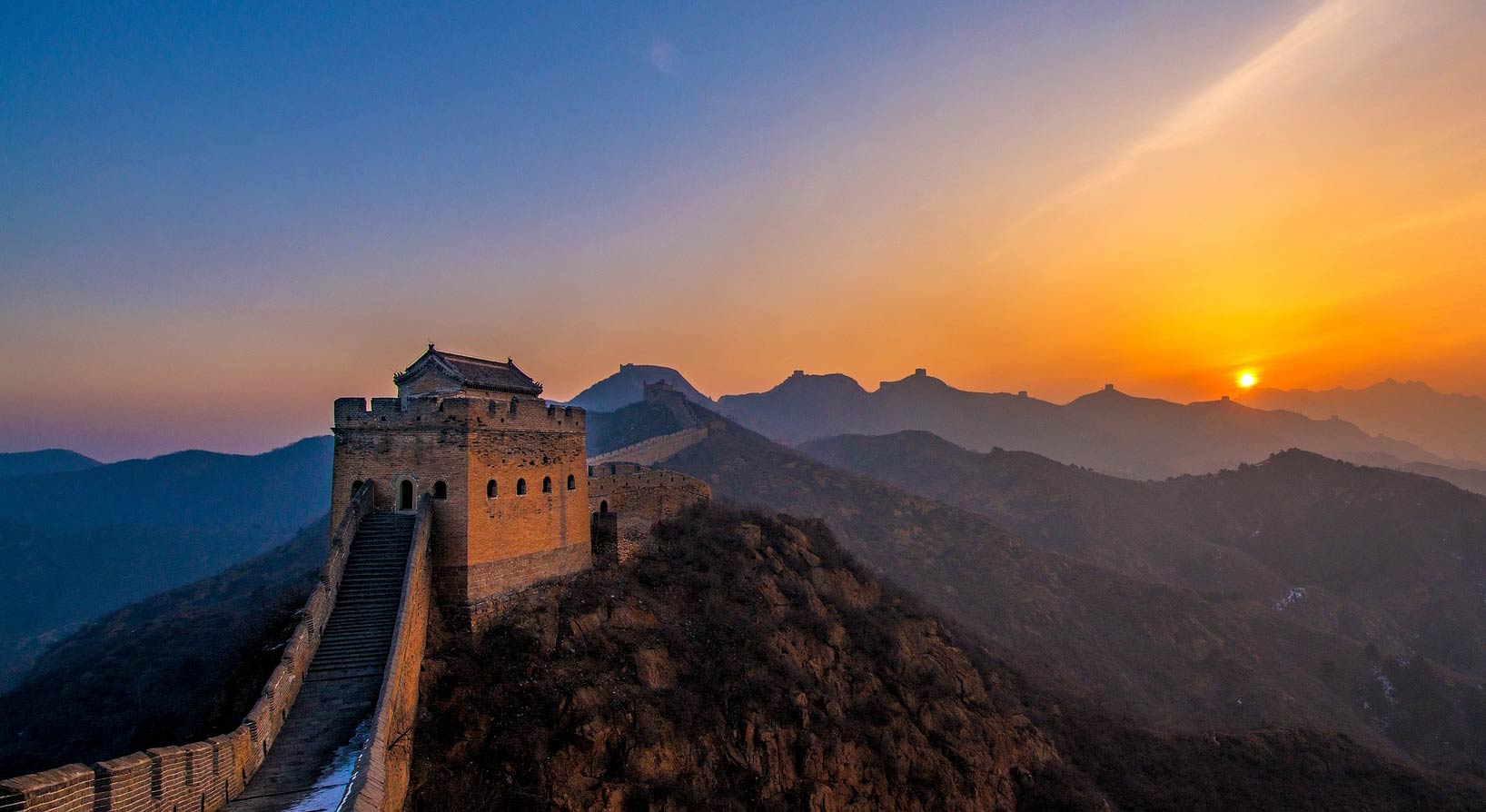
The Great Wall of China is one of the most famous structures in the entire world. It is a series of walls and fortifications on which construction began over 2 millennia ago to protect China from invaders. Today, the Great Wall is not only a popular tourist attraction but also a UNESCO World Heritage site and a symbol of Chinese culture and history. In this article, we will explore some interesting facts about the Great Wall of China, including its history, construction, and legends. Additionally, we will look at some fun facts geared towards kids.
In this article, I will be going over 16 interesting facts about The Great Wall of China. If you enjoy this article and are interested in an article explaining some of the most frequently asked questions about the Great Wall of China please click here.
The Great Wall of China is the longest wall on the planet, and it stretches an impressive 21 196 kilometers (13 170 miles) through northern China.
The wall was built primarily to protect China from invading armies from the north, but it also served as a means of controlling immigration and emigration, as well as trade along the Silk Road. The Great Wall is made up of many different sections, some of which are still well-preserved, while others have fallen into disrepair or have been destroyed over time. Despite this unfortunate fact, the Great Wall still remains as one of the most impressive engineering feats in human history and the longest wall in human history.
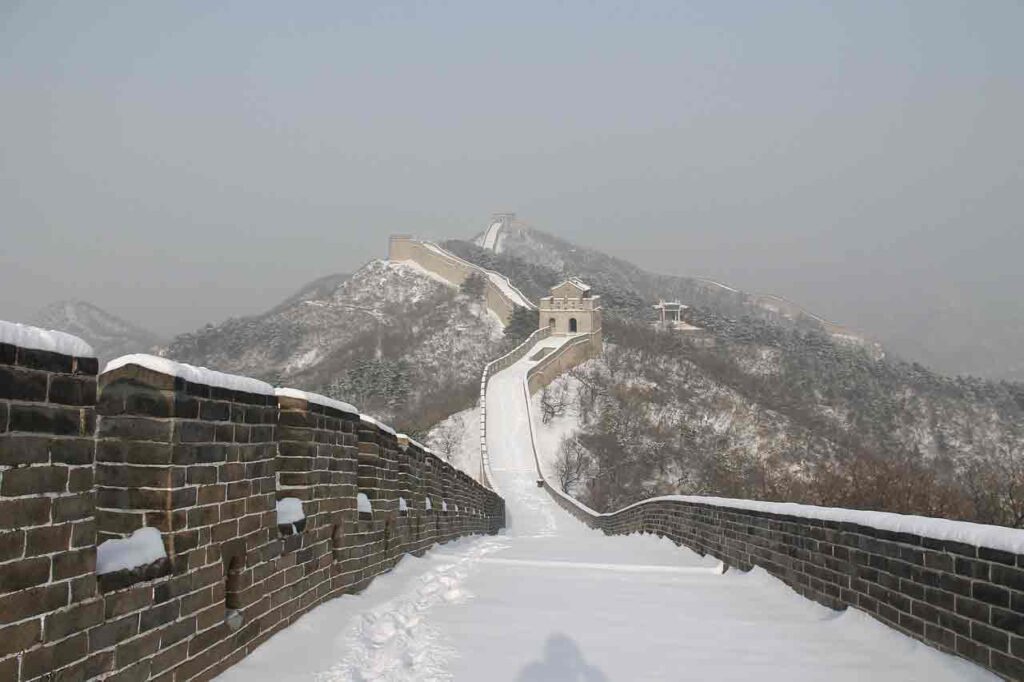
The Great Wall of China is not only one of the most impressive structures in the world but also one of the oldest structures in the world. With an impressive history that dates back around 2 700 years, the construction of the Great Wall began in the 7th century BC. This was during the Warring States period of China, during this time, many small states were fighting for control over the region. As a result, the construction of walls and fortifications was common to protect the various smaller territories.
Over the years, the different states built separate walls to defend their own territories, but it wasn’t until the Qin Dynasty (221–206 BC) that the walls were connected to form what is now known as the Great Wall of China. Since the Qin Dynasty the Great Wall of China has been rebuilt, expanded, and maintained over the centuries by various other dynasties, including the Han, Sui, Jin, and Ming Dynasties, with the Ming Dynasty being responsible for most of the Great Wall that still stands today. This leads onto our next fact.
The Ming Dynasty, which ruled China from the years 1368 to 1644, is responsible for the construction of most of the Great Wall of China that is visible today. The Great Wall was built and rebuilt over many centuries by various Chinese dynasties, but it was during the Ming Dynasty that the most extensive building work was carried out. The Ming Dynasty began constructing the wall in the late 14th century, and the work continued for about 200 years.
The Ming Dynasty’s Great Wall was over 8 851 kilometers (5 500 miles) long, and it stretched from Shanhaiguan in the east coast of China to the northwest in Jiayuguan. It was built to withstand attacks from enemy armies, and it included many defensive features such as watchtowers, fortresses, and barracks. Today, much of the wall that remains from the Ming Dynasty is over 600 years old, and it is a testament to the skill and ingenuity of the Chinese engineers and workers who built it.

During the construction of the Great Wall of China, more than 1 million laborers were recruited to work on this massive project. Considering how long the Great Wall of China took to be built it comes as no surprise that the construction required so many workers. Most of these laborers were peasants, convicts, and soldiers who were forced to work on the wall by the ruling dynasties. They were forced to leave their homes and families to work long, hard hours building the wall in some of China’s most rugged and dangerous terrain.
The workers faced many challenges during the construction process, including harsh weather conditions, dangerous working conditions, and a lack of basic resources for example tools, water, and food.
The laborers who worked on the wall were also poorly paid, and many of them died during the construction process due to accidents, illness, and exhaustion. Despite the difficult conditions, the workers persevered, and the wall was finally completed after many centuries of work.
The Great Wall of China is one of the most popular tourist attractions in China, attracting over 10 million visitors every year. It has also been visited by more than 400 state heads and VIPs from around the world, including former US Presidents Richard Nixon, Ronald Reagan, and Barack Obama, and other prominent figures such as Queen Elizabeth the Second and former South African President Nelson Mandela.
In more recent years, efforts have been made to manage the large crowds and preserve the Great Wall for future generations. Some sections of the wall have been sectioned off and closed to visitors, with other restrictions also being put in place to manage the number of visitors allowed to enter certain parts of the wall each day. This is to help protect the wall from damage and erosion caused by the sheer number of people who visit each year.
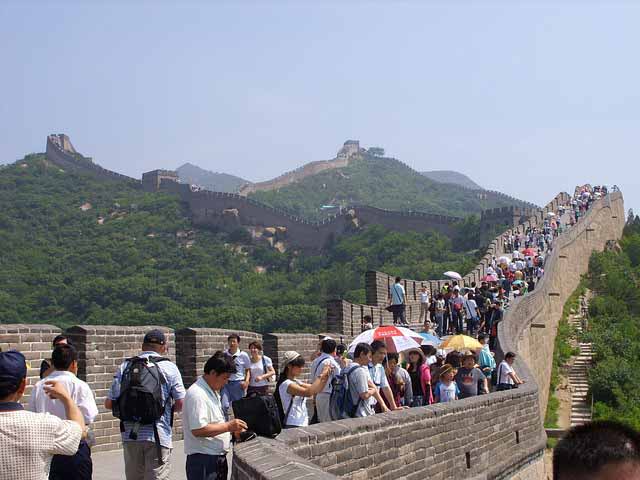
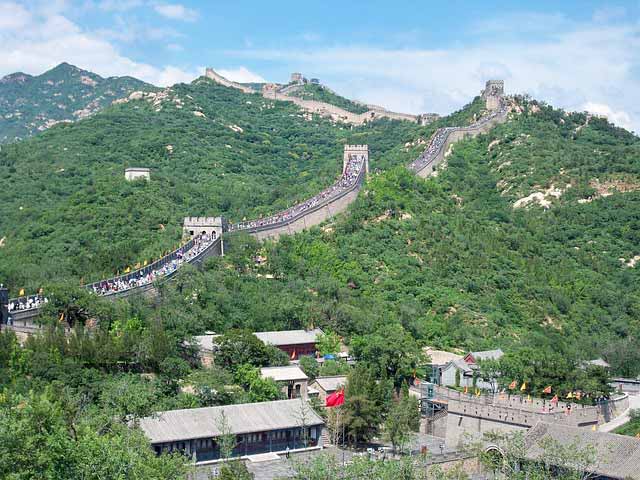
Despite considerable efforts to preserve and protect the Great Wall of China, much of the wall has disappeared over time. Natural erosion, weathering, and human activities such as vandalism and looting have contributed to the degradation of the wall over its long history.
Additionally, many sections of the wall were used as a convenient source of building materials for nearby villages and towns, particularly during times of war and political turmoil which we will discuss in the next fact.
Today, efforts are being made to protect and restore the Great Wall, including as we previously mentioned limiting access to certain areas and implementing conservation measures. The Chinese government has also invested in conservation and restoration projects, such as rebuilding missing sections and reinforcing weak areas.
During the Cultural Revolution period in China (1966-1976), the Great Wall of China, like many other cultural relics and historical sites, was not valued as highly as they are today. The political climate and social upheaval of the time led to the widespread destruction of many cultural artifacts, unfortunately, this included many sections of the Great Wall of China.
During the destruction caused by political upheaval, many bricks from the Great Wall were also used for more practical purposes. During this time, the Chinese government encouraged the use of all available resources for economic development, this led to many bricks from the Great Wall being used in building homes, farms, or reservoirs.
This contributed to the disappearance of sections of the wall, and today, only about one-third of the Great Wall built during the Ming Dynasty is still in good condition, and many sections are considered endangered and in need of urgent restoration.
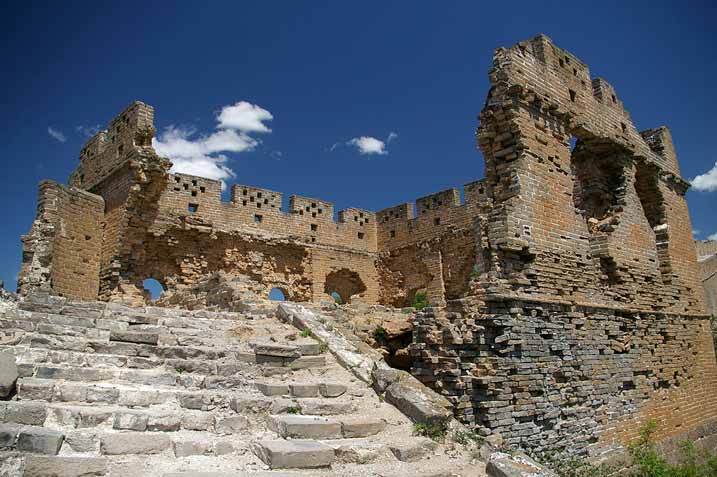
The Gubeikou section of the Great Wall of China is located in the northeast of Miyun County, about 120 kilometers from Beijing. This section of the Great Wall of China was an important military stronghold in ancient times, and it played a significant role in defending the capital city of Beijing from foreign invaders.
During the Second Sino-Japanese War (1937-1945), the Gubeikou section of the Great Wall of China was a major battleground between the Chinese and Japanese armies. In 1933, the Japanese army captured the Shanhai Pass, a strategic pass at the eastern end of the Great Wall of China. This allowed the Japanese army to advance towards Beijing and Tianjin, and they eventually reached the Gubeikou section of the Great Wall.
In August 1937, the Chinese army launched a counterattack against the Japanese army at Gubeikou. The battle lasted for several days, and both sides suffered heavy casualties. The Chinese army eventually repelled the Japanese army, and the Gubeikou section of the Great Wall of China remained under Chinese control.
Today, visitors can still see the bullet holes as well as damage to towers caused by shelling, which serves as a reminder of the fierce battle that took place there. The Gubeikou section of the Great Wall of China is a popular destination for tourists who are interested in history and military culture.
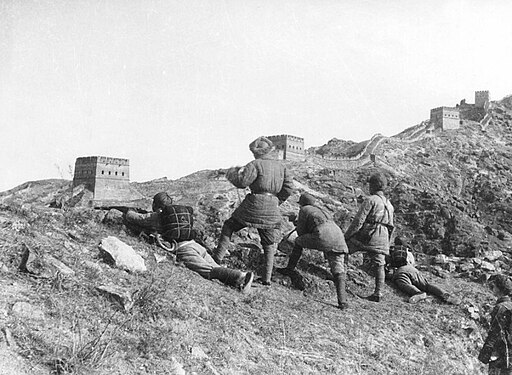

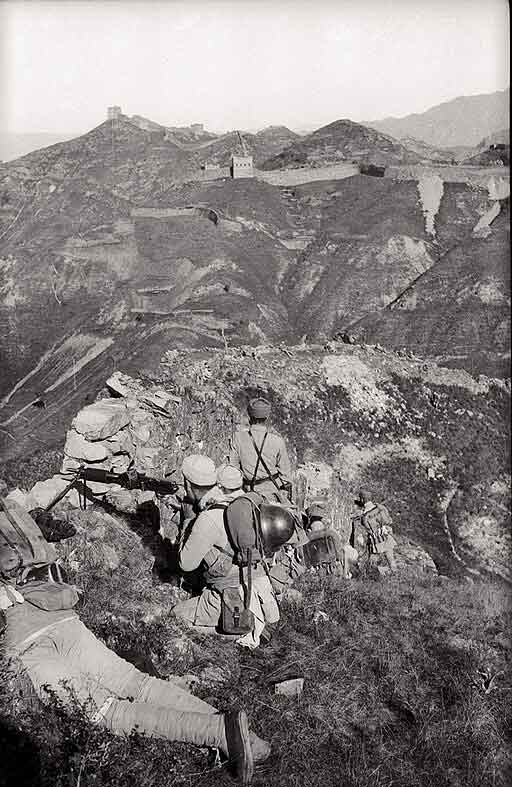
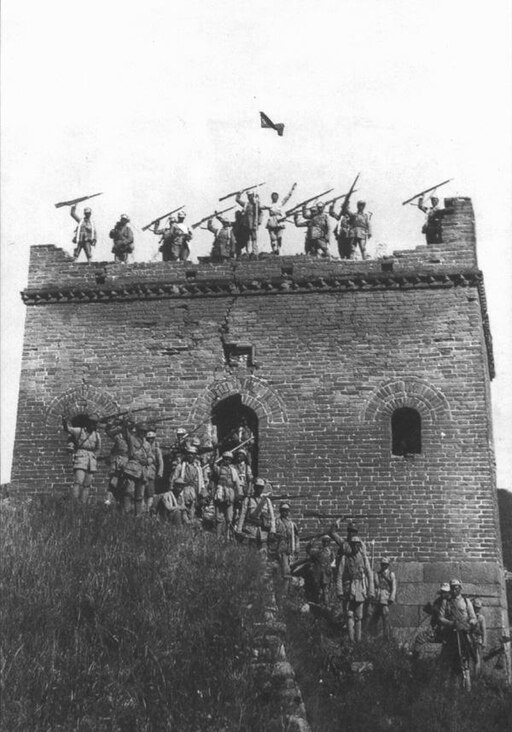
Shanhai Pass, also known as Shanhaiguan, holds a unique distinction among the various sections of the Great Wall of China as it is the only portion of the Wall that directly meets the sea. Situated in the city of Qinhuangdao in Hebei Province, this particular segment is located at the easternmost point of the Ming Dynasty’s Great Wall.
Shanhai Pass served as a vital strategic stronghold. It’s geographical positioning, with the Bohai Sea to the east and the Yan Mountains to the west, offered a natural advantage in defending against potential invaders from both land and sea.
Today, the same as much of the Ming dynasty’s great wall the Shanhai Pass remains a popular tourist destination, drawing visitors from around the world who are eager to witness this remarkable meeting of the Great Wall of China and the sea. Tourists can explore the ancient ramparts, walk along the fortified walls, and soak in the awe-inspiring views of the Bohai Sea.

Recognizing the potential damage that insects, especially termites, could cause to the structures of the great wall of China, the builders of the Great Wall devised a solution by incorporating arsenic into the construction of the wall. Arsenic “The king of poisons,” is a naturally occurring mineral that is extremely toxic to humans as well as insects.
The application of arsenic was mainly focused on the wooden materials, such as beams and planks, and sometimes other parts of the wall as well with the goal of repelling and eliminating insects on contact.
The use of arsenic in the Great Wall of China was an innovative technique aimed at ensuring the longevity and strength of the Great Wall. By deterring insects, the toxic nature of arsenic protected the wall from infestations that could compromise the structural integrity of the wall.
The builders of the Great Wall of China employed a fascinating technique using sticky rice as mortar. Cooked sticky rice, also known as glutinous rice, was mixed with other materials such as lime and sand to create a unique adhesive. This sticky rice mortar offered many advantages in construction. It provided a strong bond between the bricks, enhancing the structural integrity of the wall.
The sticky rice mixture also exhibited flexibility, allowing the wall to withstand external pressures such as earthquakes and environmental shifts. It also proved resistant to water damage, protecting the wall from erosion caused by rain and moisture. The use of sticky rice as mortar showcases the innovative and resourceful nature of ancient builders.
The concept of the seven wonders of the world dates back to the ancient world, where lists were compiled to highlight the most extraordinary human-made structures. While many of the original wonders have been lost to time, efforts have been made to create modern lists that capture the wonders of different eras.
The Great Wall of China secured its place among the new seven wonders of the world through a global poll conducted by the New7Wonders Foundation. This foundation sought to engage people from around the world to vote for their favourite landmarks, representing the collective heritage of humanity.
The inclusion of the Great Wall in this prestigious list is a recognition of its cultural, historical, and architectural significance on a global scale. It has captivated the imaginations of people worldwide, drawing millions of visitors each year who marvel at its grandeur and admire its enduring legacy.
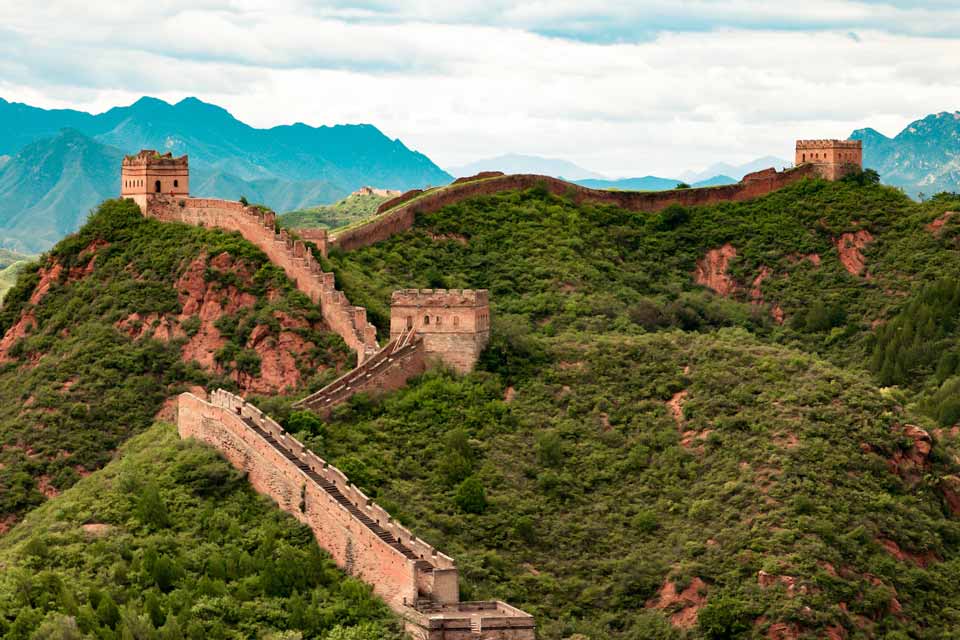
Long ago, when the Great Wall of China was being built, there was an interesting legend that tells of a wise dragon. According to the story, the dragon was both wise and helpful that wanted nothing more than to assist the people in constructing the wall.
The legend goes that the dragon possessed a special ability: the power to draw out the path for the Great Wall. Using its enormous strength, the dragon travelled across the vast stretches of land where the wall was to be built. With every step it took, the dragon left a deep track in the ground, like a guiding path for the workers.
The workers, inspired by the dragon’s tracks, followed them diligently. They laid the bricks and stones, creating a strong and mighty wall that would protect their land. They were amazed by the dragon’s guidance and believed that it brought them good fortune and blessings.
The Great Wall of China has earned recognition as a UNESCO World Heritage site, which is a prestigious designation given to places of outstanding universal value. This acknowledgment highlights the exceptional cultural significance and historical importance of the Great Wall.
As a UNESCO World Heritage site, the Great Wall of China is recognized as a unique and irreplaceable part of humanity’s heritage. It symbolizes the remarkable achievements of ancient civilizations and stands as a testament to the ingenuity, skill, and perseverance of the people who built it.
By being recognized as a UNESCO World Heritage site, the Great Wall of China is preserved and protected for future generations. It serves as a valuable educational resource, allowing people from all over the world to learn about Chinese history, engineering achievements, and cultural traditions.
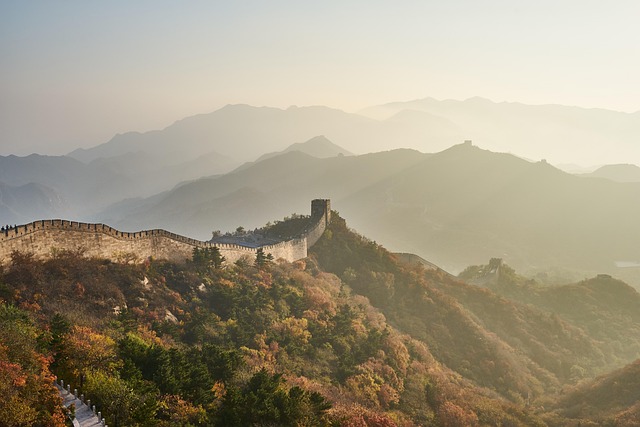
Many people have heard the exciting idea that the Great Wall of China is visible from space. It’s a fascinating concept to think that such a massive structure could be seen all the way from up above the Earth. However, it’s important to know that this idea is unfortunately just a myth.
The Great Wall of China is undoubtedly an impressive feat, but it is just not wide enough to be seen with the naked eye from space. In reality, the Great Wall’s width is only a few meters wide in most places. When viewed from the distance of space, such as from the International Space Station (ISS) or from spacecraft, it becomes incredibly challenging to see such a narrow structure among the vastness of the Earth’s surface.
To put it into perspective, from space, the Great Wall is similar in width to a tiny thread or a strand of hair. The Earth is an enormous planet, and objects that are visible from space tend to be much larger and more distinct, like cities, large bodies of water, or even long highways in a desert setting are more visible.

The Great Wall of China’s sheer size made it difficult for soldiers to monitor and protect every section simultaneously. This forced the soldiers posted on the wall to come up with ways to communicate over the long distances of the wall to ensure assistance when needed.
One of the essential means of communication used by the soldiers that were defending the Great Wall was to use smoke signals. Smoke signals involved lighting fires in designated locations along the Wall, creating distinct patterns and shapes of smoke. These smoke signals acted as a visual language, conveying important messages across the long distances of the Wall. By varying the number, duration, and arrangement of the smoke puffs, the soldiers could communicate specific information, such as the severity of the threat, the direction of attack, or who was in the need of reinforcements.
In addition to smoke signals, soldiers utilized other methods of communication to transmit messages quickly. Drumbeats were used to send signals across shorter distances. By using different rhythms and patterns, the soldiers could convey specific messages to nearby garrisons or units. The drumbeats served as a form of audible communication, alerting neighbouring troops to potential dangers or the need for immediate support.
In conclusion, The Great Wall of China is not only an architectural marvel but also a testament to human ingenuity and perseverance. Throughout its extensive history, it has captured the imagination of people worldwide. In this article, we have explored 16 interesting and fun facts about this iconic structure. From its length and construction techniques to its cultural significance and legends, the Great Wall of China offers a wealth of fascinating facts. It stands as a symbol of China’s rich history, cultural heritage, and the remarkable achievements of ancient civilizations. As we delve into the depths of its past, the Great Wall reminds us of the remarkable feats that can be accomplished when human determination and innovation come together.
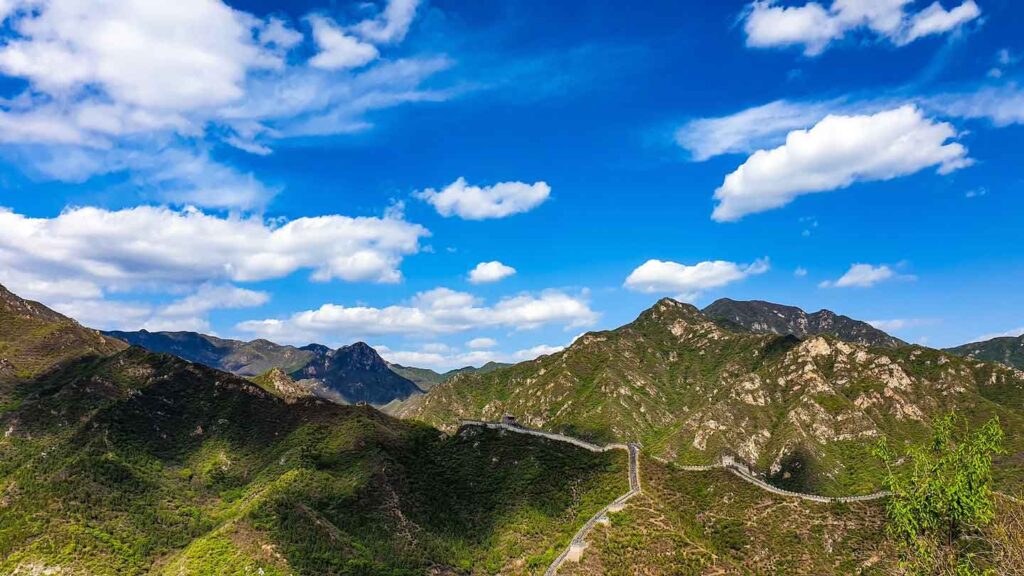
If you enjoyed this article and would like to see more about The Great Wall of China please click here to see our article on some of the most asked questions about The Great Wall of China explained!
And finally, if you would like to find out more about the country home to The Great Wall of China please click here to see our article on interesting facts about China!